
Accounting For Dummies, 4th edition
.pdf
140 Part II: Figuring Out Financial Statements
Figure 7-1:
Two versions of financial statements for the business.
Typical Business, Inc.
(Dollar amounts in thousands)
Balance Sheet at December 31, 2009
Assets |
|
|
Version A |
|
Version C |
|
Difference |
|
Cash |
$2,165 |
|
$2,045 |
($120) |
|
|||
Accounts receivable |
$2,600 |
|
$2,570 |
($30) |
|
|||
Inventory |
$3,450 |
|
$2,750 |
($700) |
|
|||
Prepaid expenses |
$600 |
|
$550 |
|
($50) |
|
||
Current assets |
$8,815 |
|
$7,915 |
|
($900) |
|
||
Property, plant, and equipment |
$12,450 |
|
$12,225 |
($225) |
|
|||
Accumulated depreciation |
($6,415) |
|
($7,435) |
|
($425) |
|
||
Net of depreciation |
$6,035 |
|
$4,790 |
|
($650) |
|
||
Total assets |
$14,850 |
|
$12,705 |
($1,550) |
|
|||
Liabilities and Owners’ Equity |
|
|
|
|
|
|
|
|
|
|
|
|
|
|
|||
Accounts payable |
$765 |
|
$765 |
$0 |
|
|||
Accrued expenses payable |
$900 |
|
$965 |
$65 |
|
|||
Income tax payable |
$115 |
|
$115 |
$0 |
|
|||
Short-term notes payable |
$2,250 |
|
$2,250 |
|
$0 |
|
||
Current liabilities |
$4,030 |
|
$4,095 |
|
$65 |
|
||
Long-term notes payable |
$4,000 |
|
$4,000 |
$0 |
|
|||
Owners’ equity: |
|
|
|
|
|
|
||
Invested capital |
$3,250 |
|
$3,250 |
$0 |
|
|||
Retained earnings |
$3,570 |
|
$1,955 |
|
($1,615) |
|
||
Total owners’ equity |
$6,820 |
|
$5,205 |
|
($1,615) |
|
||
Total liabilities and owners’ equity |
$14,850 |
|
$13,300 |
|
($1,550) |
|
||
|
|
|
|
|
|
|
||
Income Statement for Year Ended December 31, 2009 |
|
|
|
|||||
|
|
|
|
|
|
|
|
|
|
|
|
Version A |
|
Version C |
|
Difference |
|
Sales revenue |
$26,000 |
|
$25,775 |
($225) |
|
|||
Cost of goods sold expense |
($14,300) |
|
($14,580) |
|
($280) |
|
||
Gross margin |
$11,700 |
|
$11,195 |
($505) |
|
|||
Selling, general, and |
|
|
|
|
|
|
||
administrative expenses |
($8,700) |
|
($8,830) |
|
($130) |
|
||
Operating earnings |
$3,000 |
|
$2,365 |
($635) |
|
|||
Interest expense |
($400) |
|
($400) |
|
$0 |
|
||
Earnings before income tax |
$2,600 |
|
$1,965 |
($635) |
|
|||
Income tax expense |
($910) |
|
($615) |
|
$295 |
|
||
Net income |
$1,690 |
|
$1,350 |
($340) |
|
|||
|
|
|
|
|
|
|
|
|
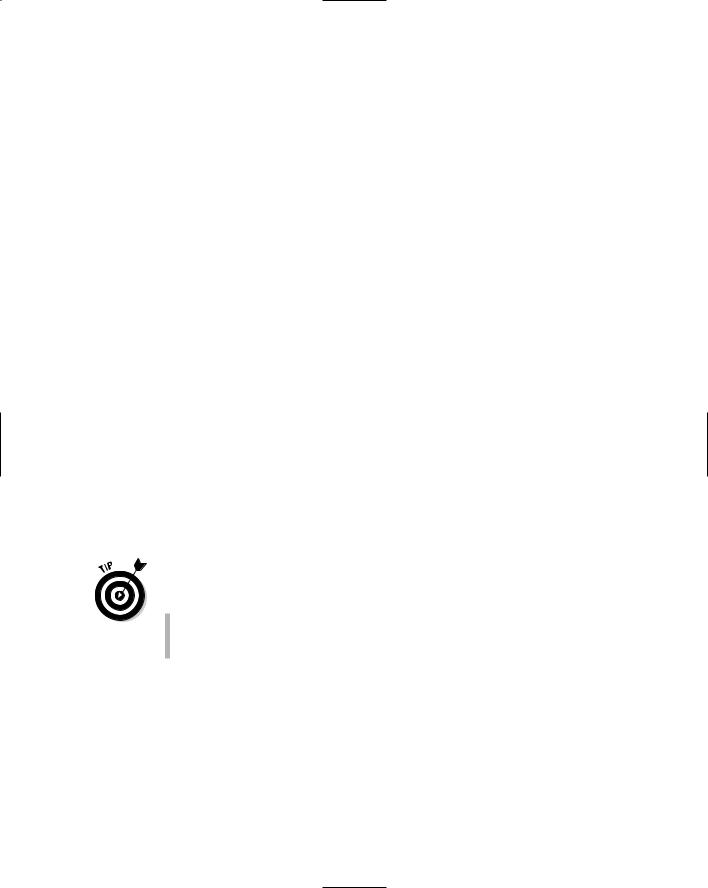
Chapter 7: Choosing Accounting Methods: Different Strokes for Different Folks 141
The “A” in Version A stands for actual and aggressive. What I mean by aggressive is that the business adopted accounting methods that maximize its recorded profit, and it used certain techniques to make its year-end financial condition look as positive as possible.
Some businesses go the opposite direction. They adopt conservative accounting methods to record profit performance, and they wouldn’t think of tinkering with their financial statements at the end of the year, even when their profit performance falls short of expectations and their financial condition has some trouble spots. In Figure 7-1, the “C” in Version C stands for conservative and cautious.
Now, you may very well ask, “Where in the devil did you get the numbers for Version C?” The dollar amounts in Version C are my best estimates of what conservative and cautious numbers would be for this business — a company that has been in business for several years, has made a profit most years, and has not gone through bankruptcy.
Figuring Out Why Financial
Statements Differ
Look at the third column on the right in Figure 7-1. These are the differences between the two financial statement versions. In the balance sheet the differences are concentrated in assets; only one liability is different. In total, assets are $1.55 million lower and liabilities are $65,000 higher. These differences are the results of recording slightly lower amounts of sales revenue and significantly higher amounts of expenses in the conservative Version C scenario.
Remember the following about revenue and expenses:
Recording sales revenue increases an asset (or decreases a liability in some cases).
Recording an expense either decreases an asset or increases a liability.
Most of the balance sheet differences in Figure 7-1 are caused by higher amounts of expenses in the Version C scenario. The cumulative amount of net income recorded over the years by the business in the Version C scenario is $1,615,000 less than in Version A:
$1,550,000 smaller amount of assets + $65,000 higher amount of liabilities = $1,615,000 less net income recorded over the years

142 Part II: Figuring Out Financial Statements
At the end of each year, the amount of annual net income is recorded in the retained earnings owners’ equity account. As you can see in Figure 7-1, the retained earnings balance in Version C is exactly $1,615,000 less than in Version A. This is a sizable amount, to be sure. But keep in mind that it took all the years of its existence to accumulate that $1,615,000 amount. The net income difference for its latest year (2009) is responsible for only part of the cumulative, total difference in retained earnings.
Sales revenue and every expense except interest are different between Versions A and C. Net income in Version C is $340,000 (about 20 percent) lower than in Version A.
Suppose that in putting a market value on the business, you use the earnings multiple method. (For more information on the valuation of a small business, see Small Business Financial Management Kit For Dummies, written by myself and my son, Tage C. Tracy [Wiley]). Suppose you are willing to pay six times the most recent annual profit of the business. (I certainly don’t mean to suggest that six times earnings is a standard multiple for all small businesses.) In Version A, you would offer $10.74 million for the business ($1.69 million net income × 6 = $10.74 million). In Version C, you would offer only $8.1 million ($1.35 million net income × 6 = $8.1 million). If the business had used more conservative accounting methods, you would offer $2.64 million less for the business!
The following sections briefly explain each of the differences in Figure 7-1, except the retained earnings difference that I explain just above. I keep the explanations relatively brief and to the point. The idea is to give you a basic taste of some of the main reasons for the differences. Note: From here on, instead of referring to Version A and Version C, I will call the two different situations Company A and Company C. Remember that Company A uses aggressive accounting methods that boost recorded profit, and Company C uses conservative accounting methods that dampen recorded profit.
Cash balance
Company A engaged in what is called window dressing, which I discuss in Chapter 12. Company A held its books open for a few days after the close of the fiscal year in order to record additional cash collections from its accounts receivable. It’s as if the cash had been received on December 31, 2009, even though the cash was not actually deposited in its checking account until the first week in January 2010. Isn’t this cheating? Well, yes; it’s like telling a small fib or a white lie.
The reason a business would do some window dressing is to improve the cash balance in its ending balance sheet. A business knows that when its creditors and shareowners read its ending balance sheet they pay particular attention to how its cash balance stacks up against its liabilities. Also, keeping the books open for a few days (only for cash collections of accounts receivable)
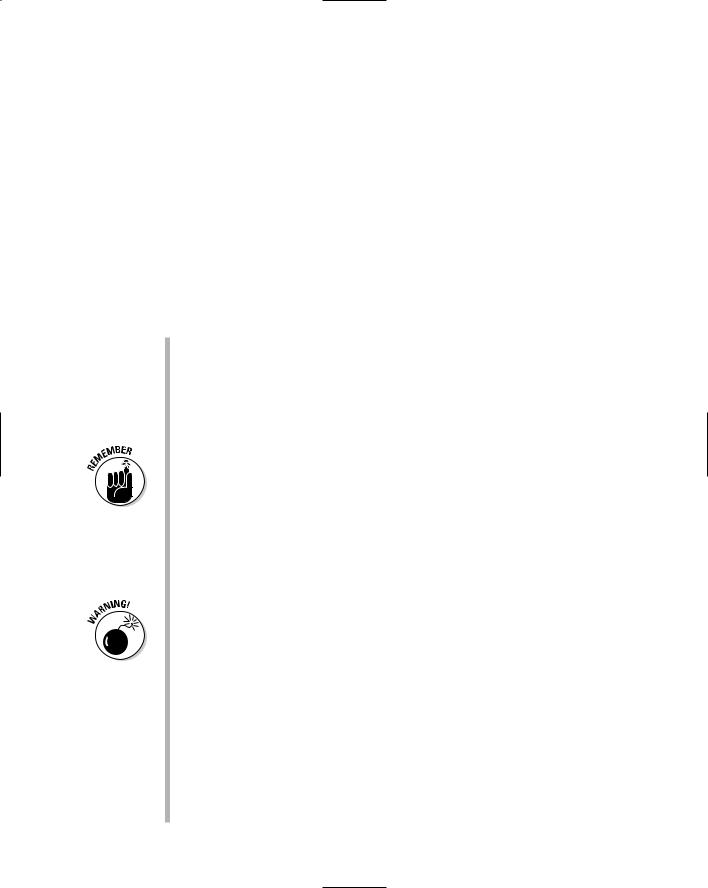
Chapter 7: Choosing Accounting Methods: Different Strokes for Different Folks 143
makes the company’s ending accounts receivable balance appear to be more under control because the balance is a smaller percent of total sales for the year. This gives the impression that the credit terms extended to customers are under good management, and the ending balance of accounts receivable is not too large (which would indicate that too many customers are late in paying their amounts owed the business).
Accounts receivable balance
One reason the ending balance of accounts receivable is lower is explained in the previous section: Company A did some window dressing. But there are two other reasons as well:
Company C waits a little longer to record sales made on credit than Company A, to be more certain that all aspects of delivering products and the acceptance by customers are finalized and there is little chance of the products being returned by the customers. This delay in recording sales causes its accounts receivable balance to be slightly lower, because at December 31, 2009 it had not yet recorded some credit sales that were still in the process of final acceptance by the customers.
Businesses should be consistent from year to year regarding when they record sales. For some businesses, the timing of recording sales revenue is a major problem — especially when the final acceptance by the customer depends on performance tests or other conditions that must be satisfied. Some businesses engage in channel stuffing by forcing their dealers or customers to take delivery of more products than they ordered. A good rule to follow is to read the company’s footnote in its financial statements that explains its revenue recognition method, and see whether there is anything unusual about it. If the footnote is vague, be careful — be very careful!
If products are returnable and the deal between the seller and buyer does not satisfy normal conditions for a completed sale, the recording of sales revenue should be postponed until the return privilege no longer exists. For example, some products are sold on approval, which means the customer takes the product and tries it out for a few days or longer to see if the customer really wants it.
Company C is stricter about writing off a customer’s past due balance as uncollectible. After it has made a reasonable effort to collect the debt but a customer still hasn’t sent a check, Company C writes off the balance as a bad debts expense. It decreases the past due accounts receivable balance to zero and records an expense of the same amount. Company A, in contrast, waits much longer to write off a customer’s past due amount. In the long run Company A still has to write off a customer’s debt if it has been outstanding too long — but it waits until the last minute to make the write-off entry.

144 Part II: Figuring Out Financial Statements
Inventory and cost of goods sold expense
The business in the example sells products, mainly to other businesses. A business either manufactures the products its sells or purchases products for resale to customers. (Chapter 11 explains the determination of product costs for manufacturing businesses.) At this point it is not too important whether the business manufactures or purchases the products it sells. What is important is that the costs of its products have drifted upward over time because of inflation and other factors. Therefore, the business has had to increase its sales prices to keep up with the product cost increases.
There are two ways to deal with product cost inflation:
Push the higher, most recent costs through to cost of goods sold expense as soon as possible.
Follow the chronological order of acquisition and let the older product costs go out to cost of goods sold before the more recent product costs are charged out to expense.
I explain these two methods in the later section “Calculating Cost of Goods Sold and Cost of Inventory.”
Company A uses the method that minimizes cost of goods sold expense and maximizes cost of ending inventory. Company C, in contrast, uses the method that maximizes cost of goods sold expense and minimizes cost of ending inventory. Note in Figure 7-1 that Company C’s ending inventory is $700,000 lower and its cost of goods sold expense for the year is $280,000 higher. Over the years its cost of goods sold expense has been charged with $700,000 that Company A has not yet charged to the expense. Company C’s cost of goods sold expense in 2009 is $280,000 higher than Company A; the remainder of the $700,000 cumulative difference in inventory cost is attributable to prior years.
Actually, not all of the cumulative $700,000 inventory difference and not all of the $280,000 cost of goods sold difference in 2009 is due to the different inventory and cost of goods sold expense methods used by the companies. Part of each difference is due to how each company applies, and puts into practice, the lower of cost or market (LCM) accounting rule. I explain this topic later in the chapter; see the section “Recording Inventory Losses under the Lower of Cost or Market (LCM) Rule.” Company C is tougher and stricter in implementing the LCM procedure. It records higher amounts of inventory write-down at the end of the year, which increases its cost of goods sold expense (or some other expense account).
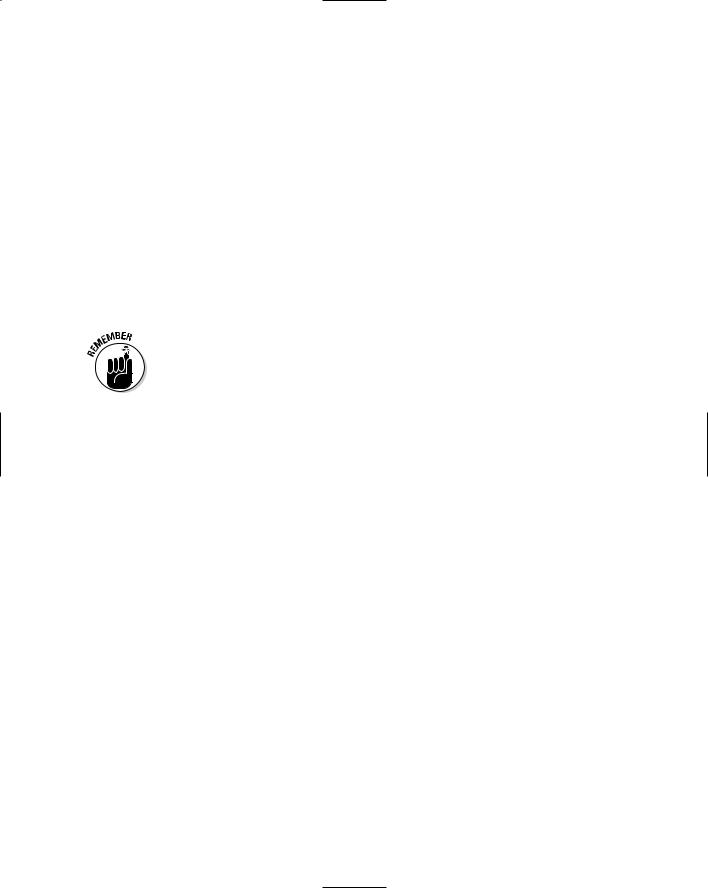
Chapter 7: Choosing Accounting Methods: Different Strokes for Different Folks 145
Cost of fixed assets, accumulated depreciation, and depreciation expense
All accountants agree that the costs of long-term operating assets that have limited useful lives to a business should be spread out over those predicted useful lives instead of being charged off entirely to expense in the year of acquisition. These long-lived operating assets are labeled property, plant and equipment in Figure 7-1, and less formally are called fixed assets. (The cost of land owned by a business is not depreciated because land is a property right that has perpetual life.) The allocation of the cost of a fixed asset over its estimated useful economic life to a business is called depreciation. The principle of depreciation is beyond criticism, but the devil is in the details.
The original costs of fixed assets should theoretically include certain costs in addition to their purchase or construction costs. However, in actual practice these fringe costs are not always included in the original cost of fixed assets. For example, it is theoretically correct to include installation costs of putting into place and connecting electrical and other power sources of heavy machinery and equipment. It is correct to include the cost of painting logos on the sides of delivery trucks. The cost of an older building just bought by a business should include the preparatory clean-up costs and the safety inspection cost. But, as I say, in practice a business may not include such additional costs in the original costs of its fixed assets.
Company A does include most of these additional costs in the original costs of its fixed assets, which means that the cost balances of its fixed assets are higher. These additional costs are not expensed immediately but are included in the total amount to be depreciated over future years. Also, Company A uses what is called straight-line depreciation, which spreads out the cost of a fixed asset evenly over the years of its useful life to the business.
In contrast, Company C does not include any costs other than purchase or construction costs in its fixed asset accounts, which means these additional costs are charged to expense immediately and are not delayed to future years. Also, and most importantly, Company C uses what is called accelerated depreciation for allocating the cost of its fixed assets to expense. Higher amounts are allocated to early years and smaller amounts to later years. Only the original cost is allocated to expense over time, but there is a front-end loading on the early years using accelerated depreciation.
I explain the straight-line and accelerated depreciation methods later in the chapter (see the section “Appreciating Depreciation Methods”). For now, note in Figure 7-1 that the original cost of Company C’s property, plant, and equipment is $225,000 smaller than Company A’s, and its accumulated depreciation balance is $425,000 higher. The company’s depreciation expense is not disclosed as a separate expense in the income statement shown in Figure 7-1. We can’t tell
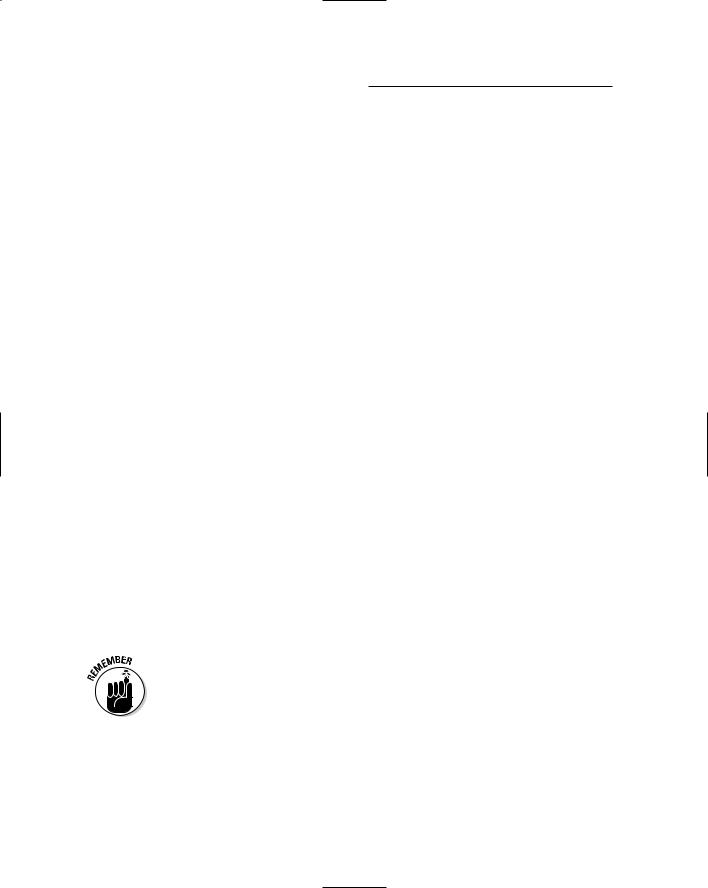
146 Part II: Figuring Out Financial Statements
from the information in the income statement the amount of 2009 depreciation expense between the two companies. But Company C’s depreciation expense for the year is higher because the business has been growing and increasing its investments in new fixed assets.
Accrued expenses payable liability balance
Most products are sold with expressed or implied warranties and guarantees. Even if good quality controls are in place, some products sold by a business don’t perform up to promises, and the customers want the problems fixed. A business should estimate the cost of these future obligations and record this amount as an expense in the same period that the goods are sold (along with the cost of goods sold expense, of course); it should not wait until customers actually return products for repair or replacement. After being in business a few years, a company can forecast with reasonable accuracy the percent of products sold that will be returned for repair or replacement under the guarantees and warranties offered to its customers. However, brand new products that have no track record may be a serious problem in this regard.
Company A does not make the effort to estimate future product warranty and guaranty costs; it records these costs on a when-paid basis. It waits until it actually incurs these costs to record an expense. The company has decided that the understatement of its liabilities is not significant.
Company C, on the other hand, takes the high road and goes to the trouble to estimate the amount of future costs for the products it has already sold. Therefore, its accrued expenses payable liability account is $65,000 higher than Company A’s. The difference of this particular expense for the year between the two versions is a bit tricky to determine. (I won’t delve into details here.) Furthermore, the $65,000 higher amount of the liability includes accruals that a business records to recognize other unpaid expenses at the end of the year.
A typical business at the end of the year has certain costs that will not be paid until sometime in the future — costs that are an outgrowth of the current year’s operating activities. For example, a business should accrue (calculate and record) the amount it owes to its employees for vacation and sick pay. A business may not have received its property tax bill yet, but it should estimate the amount of tax to be assessed and record the proper portion of the annual property tax to the current year. One expense accrual is easy to calculate: the accumulated interest on notes payable that hasn’t been paid yet at the end of the year. Calculating this amount is straightforward because the amount borrowed and the interest rate are definite.
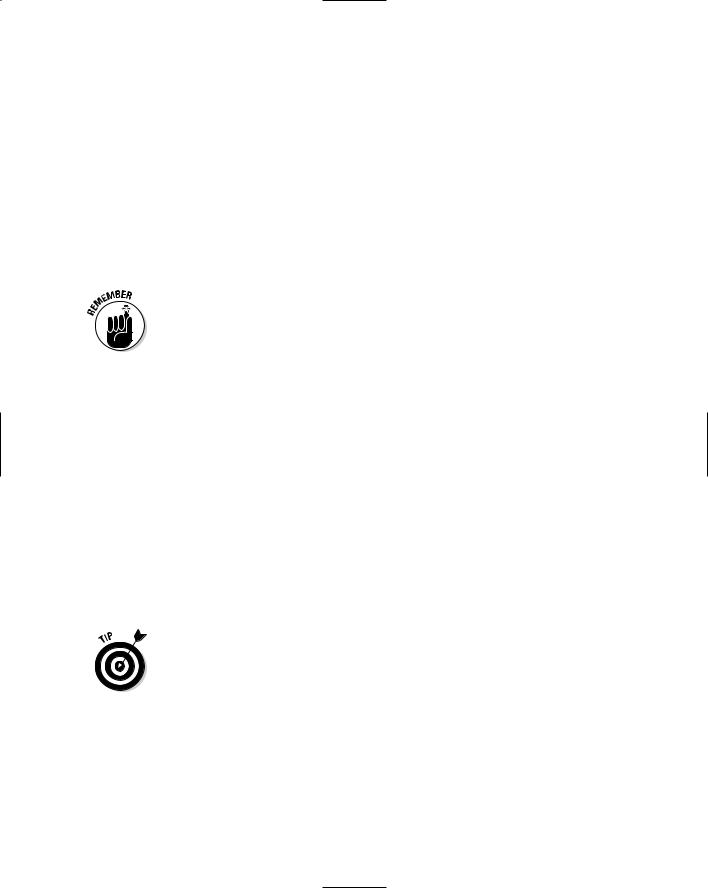
Chapter 7: Choosing Accounting Methods: Different Strokes for Different Folks 147
Wrapping things up
In Figure 7-1, you should note that the accounts payable liability is the same in both versions. These short-term operating liabilities are definite amounts that have definite due dates. There are no accounting choices or options in recording accounts payable. Also in Figure 7-1, I keep the income tax payable the same in both versions. If the business had used different accounting methods for determining its annual taxable income, its annual income tax expense would have been different, and the ending amount of its income tax payable liability might be a little different. This point is not that important to go into here.
Figure 7-1 presents just one alternative scenario regarding how different accounting methods cause differences in the financial statements of a company. The differences in Figure 7-1 are not unrealistic in my opinion. But to be frank, my alternative numbers are no more than educated guesses. Businesses keep only one set of books. Even a business itself doesn’t know how different its financial statements would be if it had used different accounting methods. Financial report readers can read the footnotes to determine whether liberal or conservative accounting methods are being used, but footnotes are not easy to read. Plus, they don’t allow you to determine what profit would have been and how the balance sheet amounts would be different if alternative accounting methods had been used.
So, why don’t I include the statement of cash flows in the financial statements comparison in Figure 7-1? Generally speaking, this financial statement, which summarizes cash flows for the year, is the same no matter which accounting methods are used by a business. Cash flows are recorded when cash is actually received or disbursed; cash flow entries don’t depend on which accrualbased accounting methods are used. However, a business may engage in window dressing at the end of the year (see the earlier section “Cash balance”). In this situation, the cash flow from operating activities is higher because the business has recorded cash flows that actually did not take place until after the end of its accounting year.
If you own or manage a business, I strongly encourage you to get involved in deciding which accounting methods to use for measuring your profit and how these methods are actually implemented. Chapter 16 explains that a manager has to answer questions about his or her financial reports on many occasions, so you should know which accounting methods are used to prepare the financial statements. However, “get involved” does not mean manipulating the amounts of sales revenue and expenses recorded in the year — to make profit look higher, to smooth fluctuations in profit from year to year, or to improve the amounts of assets and liabilities reported in your ending balance sheet. You shouldn’t even consider doing these things. (Of course these manipulations go on in the real world. Some people also drive under the influence, but that doesn’t mean you should.)
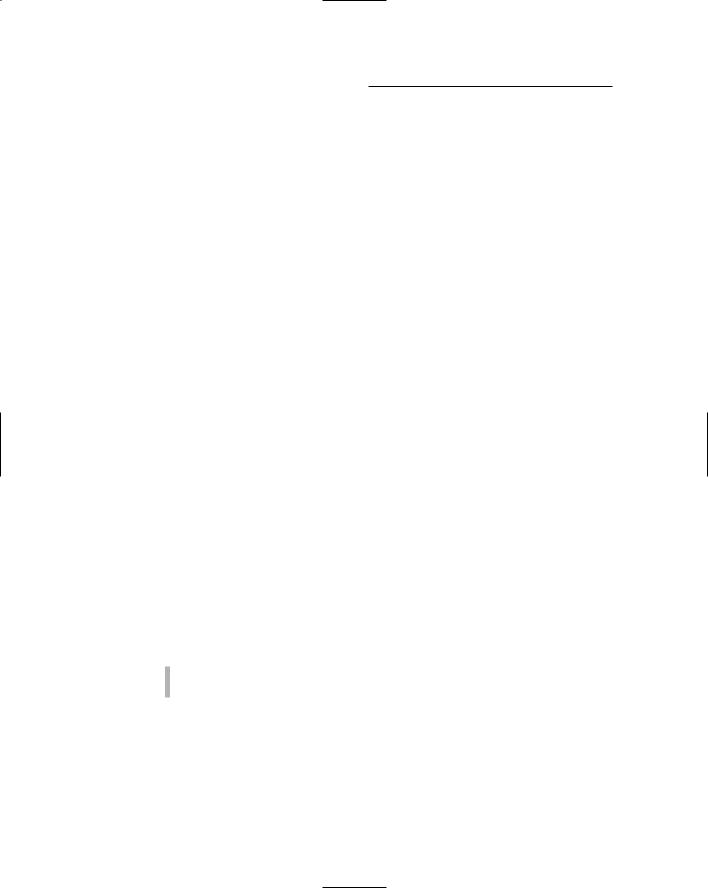
148 Part II: Figuring Out Financial Statements
Calculating Cost of Goods Sold
and Cost of Inventory
One main accounting decision that must be made by companies that sell products is which method to use for recording the cost of goods sold expense, which is the sum of the costs of the products sold to customers during the period. You deduct cost of goods sold from sales revenue to determine gross margin — the first profit line on the income statement (refer to Figure 7-1). Cost of goods sold is a very important figure, because if gross margin is wrong, bottom-line profit (net income) is wrong.
A business acquires products either by buying them (retailers and distributors) or by producing them (manufacturers). Chapter 11 explains how manufacturers determine product cost; for retailers, product cost is simply purchase cost. (Well, it’s not entirely this simple, but you get the point.) Product cost is entered in the inventory asset account and is held there until the products are sold.
When a product is sold, but not before, the product cost is taken out of inventory and recorded in the cost of goods sold expense account. You must be absolutely clear on this point. Suppose that you clear $700 from your salary for the week and deposit this amount in your checking account. The money stays in your bank account and is an asset until you spend it. You don’t have an expense until you write a check.
Likewise, not until the business sells products does it have a cost of goods sold expense. When you write a check, you know how much it’s for — you have no doubt about the amount of the expense. But when a business withdraws products from its inventory and records cost of goods sold expense, the expense amount is in some doubt. The amount of expense depends on which accounting method the business selects.
A business can choose between two opposite methods to record its cost of goods sold and the cost balance that remains in its inventory asset account:
The first-in, first-out (FIFO) cost sequence
The last-in, first-out (LIFO) cost sequence
Other methods are acceptable, but these two are the primary options. Caution: Product costs are entered in the inventory asset account in the order acquired, but they are not necessarily taken out of the inventory asset account in this order. The different methods refer to the order in which product costs are taken out of the inventory asset account. You may think that only one method is appropriate — that the sequence in should be the sequence out. However, generally accepted accounting principles (GAAP) permit alternative methods.
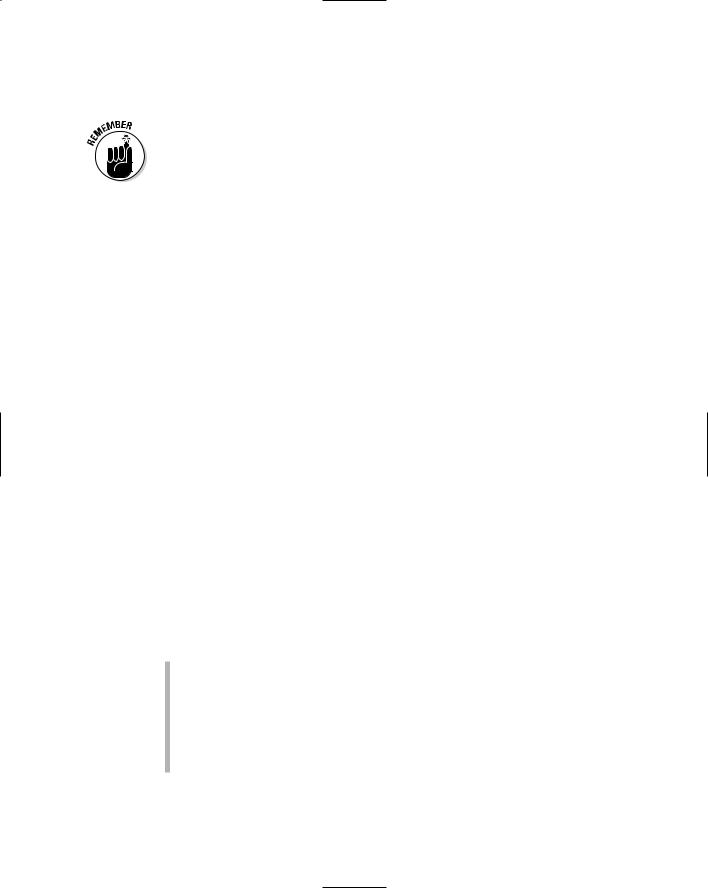
Chapter 7: Choosing Accounting Methods: Different Strokes for Different Folks 149
The choice between the FIFO and LIFO accounting methods does not depend on the actual physical flow of products. Generally speaking, products are delivered to customers in the order the business bought or manufactured the products — one reason being that a business does not want to keep products in inventory too long because the products might deteriorate or show their age. So, products generally move in and move out of inventory in a first-in, first-out sequence. Nevertheless, a business may choose the last-in, first-out accounting method.
The FIFO (first-in, first-out) method
With the FIFO method, you charge out product costs to cost of goods sold expense in the chronological order in which you acquired the goods. The procedure is that simple. It’s like the first people in line to see a movie get in the theater first. The ticket-taker collects the tickets in the order in which they were bought.
Suppose that you acquire four units of a product during a period, one unit at a time, with unit costs as follows (in the order in which you acquire the items): $100, $102, $104, and $106. By the end of the period, you have sold three of these units. Using FIFO, you calculate the cost of goods sold expense as follows:
$100 + $102 + $104 = $306
In short, you use the first three units to calculate cost of goods sold expense.
The cost of the ending inventory asset, then, is $106, which is the cost of the most recent acquisition. The $412 total cost of the four units is divided between $306 cost of goods sold expense for the three units sold and the $106 cost of the one unit in ending inventory. The total cost has been accounted for; nothing has fallen between the cracks.
FIFO works well for two reasons:
Products generally move into and out of inventory in a first-in, first-out sequence: The earlier acquired products are delivered to customers before the later acquired products are delivered, so the most recently purchased products are the ones still in ending inventory to be delivered in the future. Using FIFO, the inventory asset reported in the balance sheet at the end of the period reflects recent purchase (or manufacturing) costs, which means the balance in the asset is close to the current replacement costs of the products.
